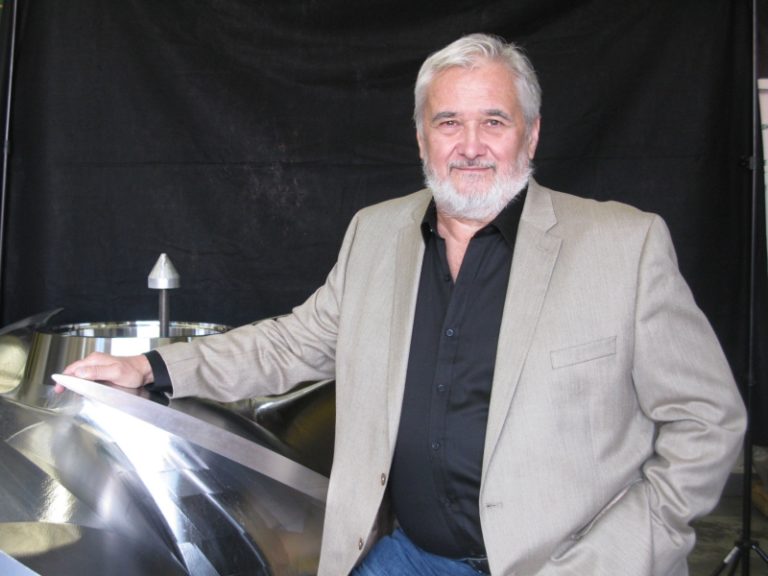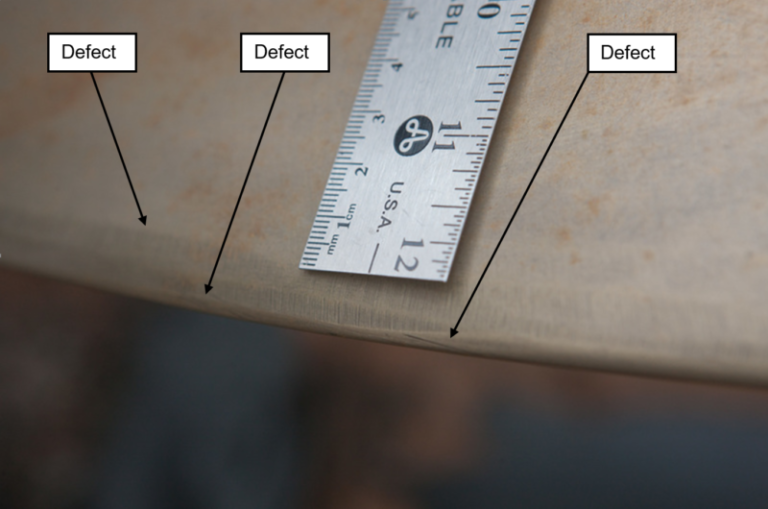The slightest deviation in the machining, polishing, and finishing of ships’ propeller blades could result in underwater radiated noise and cavitation, even if defects are within the maximum tolerance allowed by classification societies and the ISO 484-1 standard.
A Canada Transport-funded study on the impact of manufacturing tolerances on propeller performance – carried out by Memorial University of Newfoundland, DRDC Atlantic Research Centre, and propeller manufacturer Dominis Engineering – found the slightest change in propeller geometry resulted in “significant” cavitation, and much earlier than previously thought.
The behaviour of a section of propeller blade with leading edge defects of 94µm, 250µm and 500µm were studied using Computational Fluid Dynamics (CFD) at the DRDC-Atlantic Research Centre, and Memorial University of Newfoundland, in a three-year project that concluded last year.
Project lead, Dominis Engineering President Bodo Gospodnetic, said: “Experimental results show that current widely accepted propeller manufacturing tolerances as stated in the ISO standard need to be thoroughly evaluated and investigated further.”
The current tolerance for a defect to the leading edge of a propeller blade is 500µm (0.5mm).
Ship propellers are manufactured according to ISO 484-1, with the majority of propellers made from castings rough machined on CNC (Computer Numerically Controlled) mills and then finished using robotic and manual grinding. However, robotic and manual grinding of propeller surfaces introduces inaccuracies and deviations from the approved design, which can lead to cavitation, erosion, noise, vibration and loss of propeller efficiency.
“The leading-edge is a very challenging area to manufacture accurately yet it has a strong influence on sheet, streak and vortex cavitation,” said Gospodnetic.
Researchers found that a ship with “defective” propeller must travel at a given percentage slower than a vessel with a “correct” propeller to operate below the cavitation inception speed and remain quiet. For example, a ship with a propeller defect of 0.5mm would have to sail at 45% of the speed of a defect-free propeller to avoid cavitation noise. The smaller the defect, the less speed reduction is required to remain quiet.
“The 0.5mm defect tested is one of the tightest ISO 484-1 propeller manufacturing tolerances yet it has been demonstrated that it affects cavitation inception significantly and detrimentally. The rules need tightening up,” said Gospodnetic.
ISO 484-1:2015 has been a standard for propellers since 1982 and although the standard was reviewed in 2015 and 2022, the allowable tolerance and geometry remains unchanged.
“We know that 80% of underwater radiated noise comes from the propeller, but if ships are legislated to be quiet in sensitive habitats such as the Juan de Fuca Strait then they will have to limit their speed to below the cavitation inception speed,” said Gospodnetic.
While initial CFD studies show how very small defects can influence cavitation inception research partners are looking for funding to continue their investigation in second phase model tests in a cavitation tunnel.
The research paper can be viewed in full by clicking on this link


Leading-edge defects on a propeller blade in service (courtesy of DRDC-Atlantic) and, pictured left, Dominis Engineering President Bodo Gospodnetic
Editors’ notes:
The speed at which cavitation first appears on the propeller is called the cavitation inception speed. There is a sudden, huge increase in noise as a ship speed goes from lower than inception speed to higher than inception speed.
In 2015, Dominis Engineering initiated a research project to determine the impact of manufacturing tolerances on propulsive and cavitation performance of propellers. This collaborative project between Dominis Engineering, DRDC-Atlantic and Memorial University in St. John’s Newfoundland was funded by the Transport Canada Innovation Centre. Phase 1 of this research project was completed in March 2022.
The theoretical results presented show that the smaller the defect, the less speed reduction is required to remain quiet. Such data forms a basis for making decisions about the quality of propeller manufacturing precision required to meet ship noise objectives.
In 2018 the company joined the F-series development JIP (Joint Industry Project) led by MARIN. This new series of propellers will be designed for best achievable efficiency, while simultaneously taking into account requirements on cavitation, noise and vibrations. The F-series is intended to eventually replace the widely used Wageningen B-series. There are 32 organizations participating in this JIP which is led by MARIN.
About Dominis Engineering
Ottawa-based in Dominis Engineering designs and manufactures high performance propellers and waterjet impellers for all ship types. Founded in 1985, the company developed the Dominis IPMS (Integrated Propeller Manufacturing System), a state-of-the-art manufacturing that uses CNC (Computer Numerically Controlled) technology to mill propelllers to “final form and finish”.
The technology, which eliminates robotic and hand finishing from the manufacturing process, was awarded the TechConnect Defense Innovation Award in 2020.

